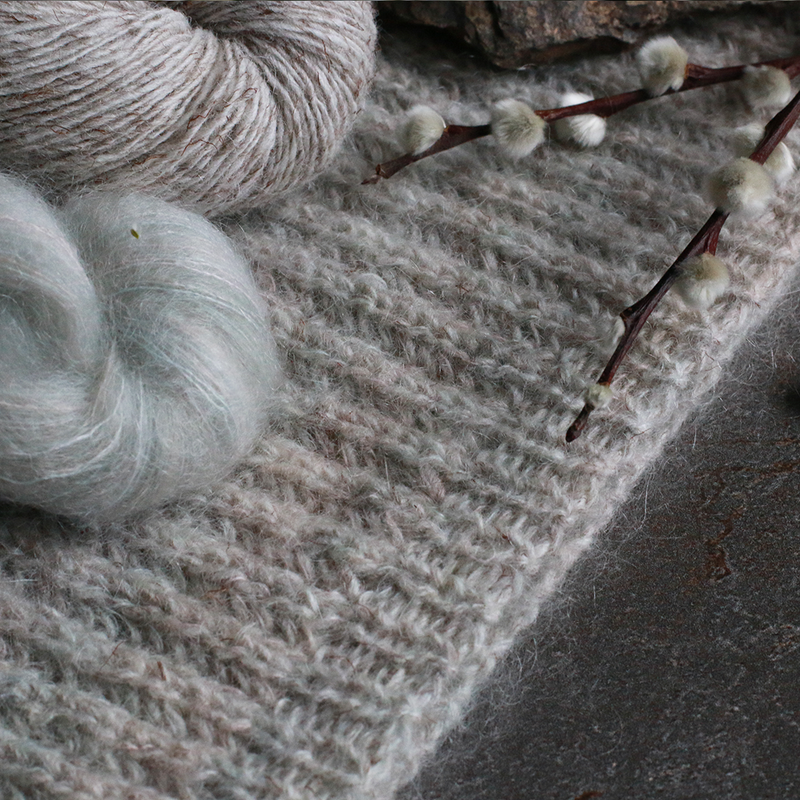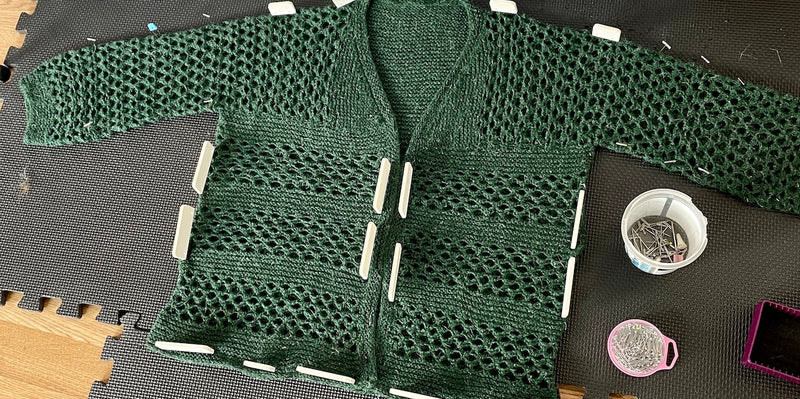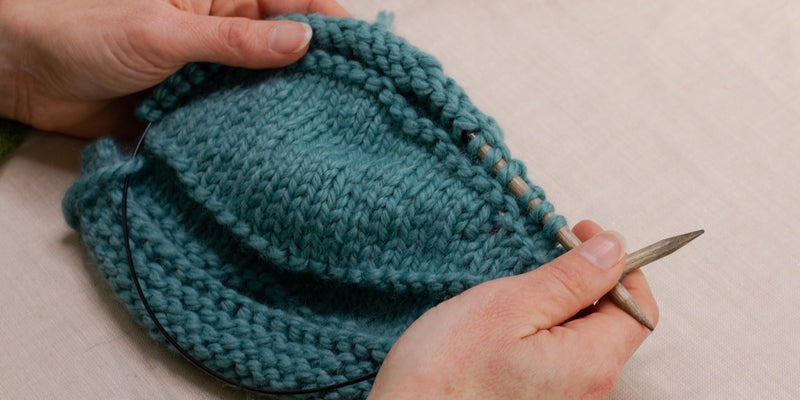One of the big reasons to add a fringe is that it saves weaving in half of your yarn tails!
On the Bubble Dash shawl project I've located my fringes close to spots where there were tails and then I just pulled the yarn tail through into the fringe as I was anchoring it in place. This make the tail nice and secure and it adds a nice bit of bulk to your fringe.
FRINGE DECISIONS
1. HOW LONG WILL IT BE?
You create the fringe by wrapping yarn around an object the width you want your fringe to be. Use a wider strip of cardboard (or anything will do..phone, gauge square, up to you) for a wide fringe and make it smaller for a narrow one.
2. HOW THICK WILL IT BE?
The thickness of your fringe is determined by how much yarn you wrap around. If you wrap more it will be thicker and less will be thinner. Keep in mind how much yarn you have left when making this decision. If you have either an extra skein of yarn or if you have other yarn in a complementary colour then you can totally go to town on this!
3. HOW WIDE WILL YOU SPACE YOUR FRINGES?
If in doubt with this one you can opt to space them widely and then come back and add extra between them. I wanted to have them fairly closely spaced so I kept the fringe less thick so I’d have enough yarn.
4. WHAT COLOURS WILL YOU USE?
For the blue/purple version of the shawl I had a small amount of all colours so I opted to combine the colours for a multi colour fringe. This meant that if I ran out of yarn it was easy to mix and match the colours. Sue did the option 2 colour and she had an extra skein of yarn. Because of this she has a thicker fringe and she kept each fringe section in a single colour.
You can see both fringes side-by-side here which might help with your decision!

I’ve done a video showing how I added my fringe – do be warned that it has KAL spoilers!!
WEAVING ENDS IN
Now what if you’ve decided that a fringe is not for you? The biggest task you’ll be faced with is the ends to weave in.
If you’ve made the decision before you start knitting then you can take advantage of that to weave the ends in as you work. I’ve done a tutorial on this method here.
If however you’ve made the decision at the end then that video doesn’t help much so I’ll give a few pointers that I use when weaving in.
To start with I weave in along the back of the work in the opposite direction that I was knitting.
You want to mimic the path of the stitch so that it is as invisible as possible.
Kathy says:
“work the tails from a smile into the frown in row above, then follow that frown around down into the smile of the row below” which sounds like a great way of remembering it!
Here is a visual of that in action:




When you’ve done that for a few stitches then pull the tail down diagonally and cut it with a little left. It sometimes helps to open the very end out so that it’s less likely to pop out from your work. I sometimes wait until after a shawl is blocked to cut tails as I find aggressive blocking makes them very likely to come out again.






